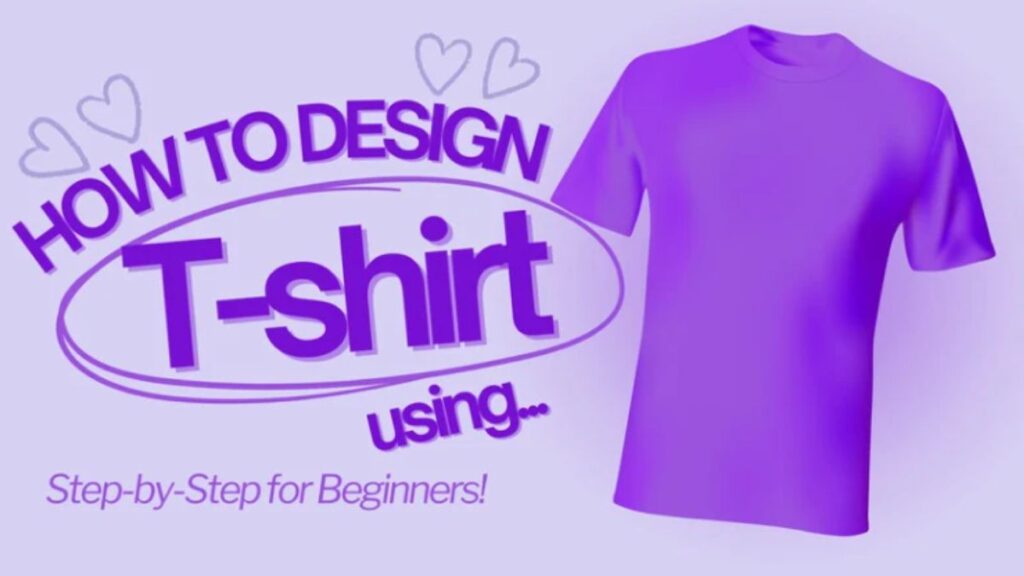Custom t-shirt printing has become a popular way to express creativity, promote businesses, and create memorable gifts. Whether you’re launching a new apparel brand or designing a custom shirt for an event, understanding the t-shirt printing process is crucial. This knowledge can help you make informed decisions about design, material selection, and printing methods. In this article, we’ll break down the step-by-step process of how t-shirt printing works, from creating the design to receiving the finished product.
1. Choosing the Right Design for Your T-Shirt
The journey to creating a custom t-shirt begins with the design. The design you choose will directly impact the final result, so it’s essential to think carefully about how it will look on a shirt. Common designs for custom t-shirts include logos, quotes, illustrations, or personalized artwork. The possibilities are endless, but not all designs are suited to every printing method, so you’ll need to consider a few factors when choosing your design.
Start by creating or selecting a design that suits your intended audience. If you’re printing for a business, for example, a clean, simple logo might work best. For personal or artistic designs, you might want to go for something more creative or intricate. Tools like Adobe Illustrator, Photoshop, and Canva are great for designing custom t-shirts, offering user-friendly features for creating professional-looking artwork. When preparing your design, remember that simplicity often works best for mass printing, while more detailed artwork may require more advanced techniques.
2. Selecting the Right T-Shirt Material
Once you have your design, the next step is choosing the right fabric. T-shirt material plays a crucial role in how the print will look and feel. The most common fabrics used for t-shirt printing are cotton, polyester, and blends. Each fabric type offers different benefits, so understanding their characteristics is important for achieving the best print.
Cotton is the most popular choice for custom t-shirts due to its soft texture, comfort, and versatility. It’s an excellent choice for screen printing and direct-to-garment (DTG) printing. Polyester, on the other hand, is better suited for sublimation printing and is ideal for athletic or performance wear due to its moisture-wicking properties. Blended fabrics, such as cotton-polyester blends, combine the best of both worlds, offering comfort and durability.
The fabric you choose will also influence your choice of printing method, as certain techniques work better on specific materials. For example, screen printing tends to work best on cotton, while DTG printing can be used on a wide range of fabrics, including blends.
3. Understanding Printing Methods: Screen Printing, DTG, and More
The printing method you choose is just as important as your design and material selection. There are several ways to print custom t-shirts, each with its advantages and limitations. The most common printing methods are screen printing, direct-to-garment (DTG) printing, and heat transfer printing. Understanding these methods will help you decide which one is right for your design.
Screen Printing: This is one of the oldest and most popular methods of t-shirt printing. It involves creating a stencil (or screen) of your design and using it to apply ink to the fabric. Screen printing is ideal for large batches of t-shirts, as it’s cost-effective when producing multiple items. However, it works best for designs with fewer colors and is less effective for intricate artwork.
Direct-to-Garment (DTG) Printing: DTG printing is a newer method that prints designs directly onto the fabric using inkjet technology. This method works well for designs with multiple colors and intricate details. It’s perfect for smaller batches or one-off prints. If you want to print a complex image or full-color design, DTG is an excellent option. One of the best printers for this method is the Ricoh Ri 400 DTF DTG printer, which offers exceptional print quality and speed for high-resolution designs.
Heat Transfer Printing: Heat transfer printing uses heat to transfer an image from a special paper onto the t-shirt fabric. This method is commonly used for small orders or designs with lots of color. While heat transfer is a simple and affordable option, it tends to have a lower durability compared to screen printing and DTG.
Each printing method has its strengths and weaknesses, so choosing the right one for your design is crucial for ensuring the best results.
4. Preparing the Design for Printing
Before your design can be printed, it needs to be prepared. This preparation process involves ensuring that your design meets the necessary specifications for the printing method you’ve chosen.
For screen printing, your design must be separated into layers based on the number of colors in your design. Each color will require a separate screen, so designs with multiple colors may require more time and effort. For DTG printing, you’ll need to ensure that your design is in the correct file format and resolution. The optimal resolution for print is 300 DPI (dots per inch) to ensure that the design appears sharp and clear.
Make sure to use vector files (such as .AI, .EPS, or .SVG) when possible, as they can be resized without losing quality. If you’re using raster images (like .JPG or .PNG), ensure they are at the correct resolution. Also, be mindful of the color mode – RGB (Red, Green, Blue) is used for digital displays, while CMYK (Cyan, Magenta, Yellow, Key) is the standard for printing.
5. Printing the T-Shirt: The Actual Process
Once your design is ready, it’s time for the actual printing process. The specific steps will depend on the printing method you’re using, but here’s a general overview of what happens during the printing stage.
For screen printing, the screens are prepared with the design, and ink is applied using a squeegee. The ink is pushed through the screen and onto the fabric, one color at a time. Each color requires a separate screen and pass, so the process can be time-consuming for multi-colored designs.
For DTG printing, the design is printed directly onto the fabric using inkjet technology. The printer applies ink to the fabric in a highly detailed and precise manner, allowing for intricate designs and full-color prints. This method is quick and efficient for smaller orders or highly detailed designs.
Once the design is printed, the fabric is cured, usually using a heat press or dryer, to set the ink and ensure durability. The curing process is essential, as it prevents the design from fading or peeling off during wear.
6. Post-Printing Process: Curing, Quality Control, and Packaging
After the t-shirt is printed, it undergoes a few final steps before it’s ready to be shipped or sold. The print needs to be cured to ensure that the ink stays in place and doesn’t fade over time. Curing typically involves using heat to dry the ink and bond it with the fabric.
Quality control is another important step in the post-printing process. The t-shirts are carefully inspected for any print imperfections, such as misalignment, color issues, or incomplete prints. Once everything checks out, the shirts are folded, packaged, and prepared for shipment.
Conclusion
Understanding the t-shirt printing process, from design to print, is crucial for ensuring high-quality results. By choosing the right design, selecting the appropriate fabric, and understanding the printing methods available, you can achieve the custom t-shirts you envision. Whether you’re printing for personal use or launching a business, following these steps will help you create custom shirts that stand out and last. Always make sure to work with a reliable printer and double-check the design to avoid mistakes. Happy printing!







